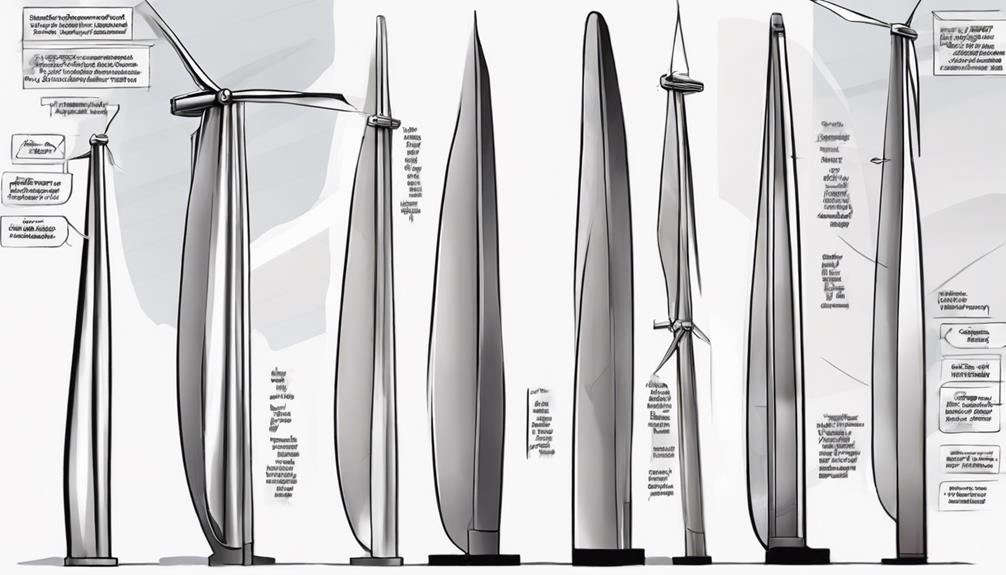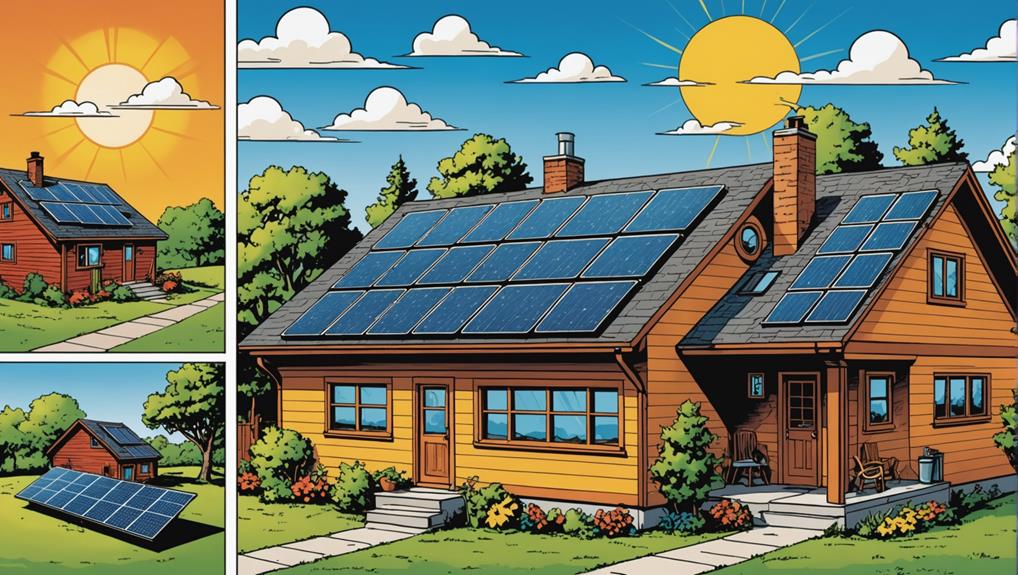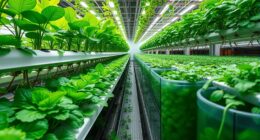To adapt current structures for renewable integration, focus on modernizing infrastructure. Upgrade with smart grid tech for seamless incorporation of renewables. Enhance system reliability and efficiency while future-proofing for sustainability. Improve energy efficiency measures for long-lasting infrastructure benefits. Utilize renewable sources like solar panels and wind turbines to reduce emissions and enhance resilience. Address challenges by embracing energy storage and upgrading grid systems. Optimize grid infrastructure to maximize renewable energy potential. Seek policy recommendations to accelerate the shift to sustainable energy. For a detailed roadmap on this crucial transformation, continue exploring the strategies outlined for seamless renewable integration.
Key Takeaways
- Retrofit existing structures with smart grid technology for renewable integration.
- Enhance operational efficiency and extend asset lifespan through upgrades.
- Implement energy management systems for optimal renewable energy performance.
- Upgrade grid infrastructure for efficient distribution and monitoring.
- Modernize systems to accommodate renewable sources and ensure sustainability.
Modernizing Existing Power Infrastructure
To enhance efficiency and integrate renewable energy sources better, modernize your existing power infrastructure now. With advancements in technology, modernizing your infrastructure is essential for optimizing grid performance and accommodating the growing share of renewable energy sources.
Retrofitting your power generation facilities and grid systems with smart grid technology can facilitate smoother integration of renewables, such as wind and hydroelectric power. By embracing modernization, you can improve the operational efficiency of your infrastructure, reduce maintenance costs, and extend the lifespan of existing assets.
Incorporating smart grid technology into your infrastructure enables more efficient control and monitoring of power flow, enhancing overall system reliability. Additionally, retrofitting older wind turbines and hydroelectric dams with updated technology can significantly improve their performance and operational capabilities.
Embracing these modernization efforts won't only future-proof your infrastructure but also contribute to a more sustainable and resilient energy system.
Implementing Smart Grid Technology

Enhancing your power infrastructure with smart grid technology revolutionizes energy management for optimal performance and renewable integration. Smart grid technology enables efficient integration of renewable energy sources, providing real-time monitoring and control of electricity flow to optimize grid performance.
By reducing energy losses and improving reliability, smart grids pave the way for seamless renewable energy integration. Implementing smart grid technology not only boosts grid flexibility and resilience but also facilitates two-way communication between utilities and consumers, leading to enhanced energy management practices.
The optimized grid performance achieved through smart grid technology guarantees a more sustainable and dependable energy system. Embracing this technology is crucial in modernizing power infrastructure to meet the needs of renewable energy integration effectively.
Smart grid technology acts as a cornerstone in constructing a more adaptable, resilient, and efficient energy grid for a sustainable future.
Retrofitting Renewable Energy Technologies

Retrofitting renewable energy technologies enhances existing infrastructure, extending operational lifespan and reducing maintenance costs.
Upgrading wind turbine technology can optimize energy production and efficiency. Similarly, retrofit strategies for hydroelectric dams improve turbine control and overall plant operations.
Emerson's integrated technology platform enables control and monitoring of biomass facilities through retrofit solutions.
By retrofitting older infrastructure with advanced technologies, grid integration can be enhanced, and energy efficiency can be optimized.
Retrofitting offers a cost-effective approach to modernizing existing renewable energy systems, making them more reliable and efficient.
Through these retrofitting initiatives, the renewable energy sector can leverage existing infrastructure while embracing technological advancements to meet the growing demands for sustainable energy production.
Enhancing Energy Efficiency Measures
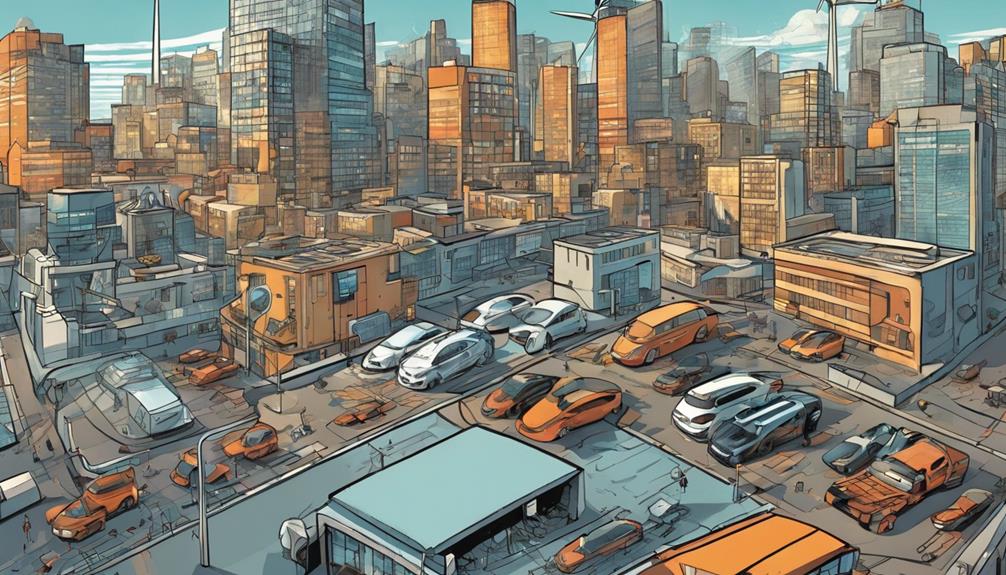
You can maximize energy efficiency by implementing strategies that focus on sustainability measures.
Upgrading infrastructure and retrofitting technologies can greatly reduce energy consumption and extend equipment lifespan.
Energy management systems and monitoring usage can further identify opportunities for energy savings, ultimately paving the way for a more sustainable and cost-effective energy infrastructure.
Energy Efficiency Strategies
By optimizing the use of existing infrastructure, energy efficiency strategies aim to reduce energy consumption effectively.
Implementing energy management systems allows for monitoring and controlling energy usage, leading to efficiency improvements.
Upgrading technologies and equipment not only extends operational lifespan but also enhances overall performance.
Through data analysis, identifying energy-saving opportunities becomes possible, resulting in significant cost savings.
Additionally, integrating renewable energy sources with energy efficiency measures can effectively lower overall energy costs and reduce environmental impact.
By combining these strategies, businesses and industries can't only enhance their operational efficiency but also contribute positively to sustainability efforts.
Embracing energy efficiency measures is a vital step towards creating a more sustainable and cost-effective energy infrastructure for the future.
Sustainability Measures
To enhance energy efficiency measures as part of sustainability initiatives, a focus is placed on upgrading existing infrastructure and integrating renewable energy sources. By implementing upgrades and retrofits, along with advanced energy management systems, infrastructure can operate more sustainably while reducing environmental impact. Extending the lifespan of equipment and optimizing energy consumption not only enhances energy efficiency but also lowers maintenance costs significantly. Sustainable building design plays a crucial role in the integration of renewable energy sources, further driving down operating expenses. Additionally, seizing energy-saving opportunities within infrastructure allows for increased efficiency and a greener footprint.
| Sustainability Measures | Description | Benefits |
|---|---|---|
| Upgrades and Retrofits | Enhancing existing infrastructure for sustainability | Extended equipment lifespan, reduced costs |
| Energy Management Systems | Monitoring and optimizing energy consumption | Improved efficiency, lower energy usage |
| Sustainable Building Design | Integrating renewable energy sources | Significant reduction in operating costs |
Leveraging Renewable Energy Sources

You can reap numerous benefits by leveraging renewable energy sources like solar, wind, hydropower, biomass, and geothermal options. These sources offer sustainable solutions while reducing carbon emissions and providing reliable electricity generation.
However, integrating these renewables may present various challenges that need to be addressed for a successful shift to cleaner energy systems.
Renewable Energy Benefits
Harnessing renewable energy sources offers numerous benefits for buildings, including reduced operating costs and decreased carbon emissions. Shifting to renewable energy can lead to noteworthy cost savings and environmental advantages. Here are three key benefits to ponder:
- Cost Savings:
By integrating renewable energy sources like solar panels or wind turbines, buildings can reduce their operating costs significantly. This change towards renewables can lower energy bills and maintenance expenses, providing long-term financial benefits.
- Environmental Impact:
Embracing renewable energy helps decrease carbon emissions and reduce the building's carbon footprint. For example, incorporating geothermal energy or biomass energy can substantially cut greenhouse gas emissions and lessen reliance on non-renewable energy sources.
- Energy Security:
Wind energy, with its potential to fulfill approximately 15% of a building's energy needs, offers a sustainable solution that contributes to energy security. This diversification of energy sources enhances resilience and reduces dependency on traditional energy grids.
Integration Challenges
Facing the intermittent nature of renewable energy sources like solar and wind, innovative solutions are essential for effective grid integration. Grid managers and utilities express caution in fully shifting to variable renewable energy, citing concerns about reliability and grid stability.
To address the intermittency challenges, energy storage technologies and a balanced mix of resources across regions are essential. Overhauling grid infrastructure is paramount for successful integration of renewable energy sources, despite the high initial costs involved.
Federal government investments in a high-voltage transmission grid could play a significant role in reducing emissions and supporting the shift towards renewable energy. By strategically implementing these solutions and technologies, the energy sector can enhance grid reliability, stability, and overall efficiency, paving the way for a more sustainable energy future.
Addressing Challenges in Transition

Addressing the obstacles encountered during the shift to sustainable energy requires innovative solutions and strategic planning. To navigate the challenges in moving to renewable integration effectively, consider the following:
- Harness Energy Storage Technology: Embracing advanced energy storage solutions can mitigate the intermittency of sustainable sources like solar and wind energy. By storing excess energy during peak production periods, grid managers can guarantee a more reliable energy supply even when sustainable sources aren't actively generating power.
- Upgrade Grid Infrastructure: Enhancing the existing grid infrastructure is crucial for accommodating the fluctuations in sustainable energy generation. Investing in modernizing the grid, such as creating a high-voltage transmission grid, can facilitate the efficient distribution of sustainable energy across regions, improving energy supply reliability.
- Collaborate with Utilities: Grid managers must collaborate closely with utilities to streamline the integration of sustainable energy. By working together, they can develop inclusive strategies to address the challenges posed by intermittent sustainable sources, ensuring a smooth shift towards a more eco-friendly energy future.
Optimizing Grid Infrastructure
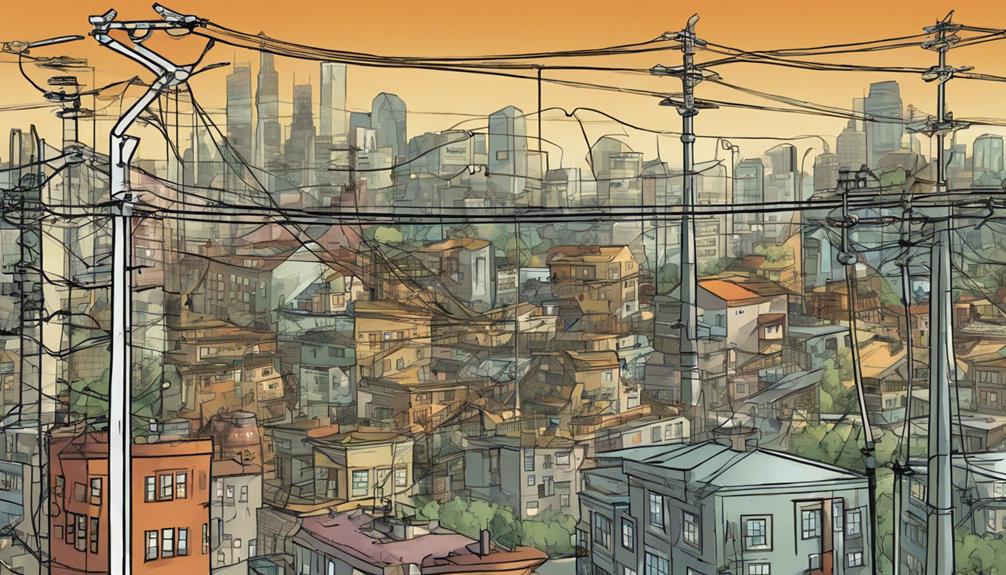
To achieve seamless integration of renewable energy sources, optimizing grid infrastructure is paramount. Upgrading grid systems plays a pivotal role in enhancing the transmission and distribution of clean energy.
By modernizing grid infrastructure, you enable more efficient integration of renewable energy, supporting stability and reliability in the system. Smart grid technologies further bolster this optimization by providing advanced monitoring and control capabilities for the flow of renewable energy.
Investments in the overhaul of grid infrastructure are essential for maximizing the potential of renewable energy sources. Through the implementation of smart grid technologies and the modernization of grid systems, you can ensure that clean energy is effectively distributed and utilized.
This optimization not only benefits the environment by reducing reliance on fossil fuels but also contributes to the overall sustainability of the energy sector. Hence, prioritizing the optimization of grid infrastructure is key to achieving a more efficient and effective integration of renewable energy.
Policy Recommendations for Renewable Transition

Implementing policy recommendations is vital for facilitating the shift to renewable energy. To effectively shift to renewables, consider the following key actions:
- Support Energy Storage Initiatives: Federal mandates backing storage operators can greatly enhance grid reliability. By promoting energy storage solutions, policymakers can ensure a smoother integration of renewable sources into the grid.
- Leverage Bipartisan Legislative Proposals: Bipartisan support for funding research and development of energy storage technologies is important. By supporting legislative proposals, policymakers can drive innovation in energy storage, accelerating the shift to renewables.
- Attract Private-Sector Investors: Credible commitments from private-sector investors play an essential role in fostering renewable energy markets. By encouraging private investment in renewable projects, the shift to clean energy can be expedited, creating a more sustainable and diversified energy ecosystem.
Frequently Asked Questions
What Is Renewable Energy Integration in Infrastructure?
Renewable energy integration in infrastructure involves updating existing structures to include sustainable energy sources like solar and wind power. It enhances efficiency, reduces maintenance costs, and supports a shift to greener energy solutions.
What Is the Enabling Technology for Renewable Energy Integration?
To integrate renewable energy, you need enabling technology like smart grids, IoT devices, and data analytics. These tools make it easy to blend renewable sources into existing grids, improving reliability, efficiency, and monitoring for smooth integration.
What Is an Example of Renewable Infrastructure?
An example of renewable infrastructure is retrofitting older wind turbines to extend operational life and reduce maintenance costs. This upgrade provides insights for optimization and improves turbine control, showcasing the integration of renewable energy technology.
What Is Renewables Integration?
Renewables integration is the process of incorporating solar, wind, hydro, and other renewables into existing power systems. By upgrading infrastructure to manage their variability, the grid becomes more sustainable. Did you know that renewable energy accounted for 72% of global power expansion in 2019?
How Can Current Infrastructure be Adapted to Maximize Renewable Energy Integration?
Current infrastructure can be adapted to maximize renewable energy integration by incorporating the latest technologies, such as the innovative wind turbine and solar panel combo. This combo can be strategically installed to make use of existing infrastructure, maximizing energy production and minimizing environmental impact.
Conclusion
As we pave the way for a greener future, remember that our power infrastructure is like a garden – constantly evolving and growing.
By adapting current structures for renewable integration, we're nurturing the seeds of sustainability and reaping the benefits of a cleaner, more efficient energy system.
Embrace the changes, tend to the progress, and watch as our world blossoms with renewable potential.
The power is in our hands to cultivate a brighter tomorrow.

